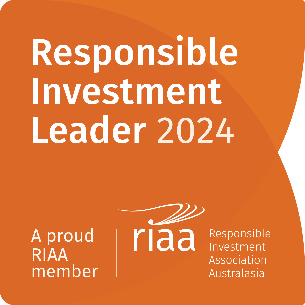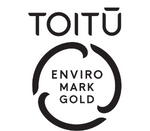Pocket Bubble?
Pocket Bubble?
Over the past 30 years we have seen extreme asset pricing bubbles occur on a number of occasions. In the late 1980’s it was NZ equities and Japanese property. In the 1990’s it was Asian property and anything to do with technology shares while in the 2000’s it was US property and financial assets. When we look at broad equity markets today, there are some commentators who believe that 10 years of historically low interest rates and central banks flooding the system with money has resulted in investor exuberance which has led to irrational pricing across the board. While we do not subscribe to this view, we do believe that increased caution by investors is sensible. The current bull market in global stocks is now into its ninth year (the second longest in history) and what concerns us is that we are seeing some clear signs of “bubble-type behaviour”.
To demonstrate this point, one of the most interesting illustrations that we can see today of extreme investor behaviour is in the world of cryptocurrencies. Recently, it appears that almost every day the financial press has been highlighting the fact that the price of Bitcoin has hit a new high. This year alone it has rallied by more than 500% and is today trading at above US$6,300/btc (Bitcoin was valued at US$1 in April 2011). So if you bought $10,000 of bitcoins in April 2011, that holding would now be worth $63 million. Currently there are over 1,000 different types of cryptocurrencies with a combined value of over US$82bn. Although the most common of these new currencies are Bitcoin and Ethereum, there are new “tokens” being released every week and the companies associated with them are flourishing as they raise new funds in the “Initial Coin Offering (ICO’s)” market. Although investors are committing hundreds of millions of dollars to these ICO’s, these businesses are typically backed by nothing, own nothing and shareholder rights are almost non-existent. A great example of the apparent madness in this space was the performance of Bioptix Inc., a manufacturer of diagnostic machinery for the biotech industry. After simply announcing that the company decided to change its name to Riot Blockchain and begin acquiring cryptocurrencies, the company’s stock price jumped by over 50% in the days preceding the change! We are huge advocates of technological disruption at Devon and believe that in the future, alternative currencies will play a valid role in commerce. But the current broad-based hype in this area is a red flag.
This level of concern isn’t warranted though when looking at global stocks. The world is currently enjoying a period of synchronized growth and with interest rates remaining at subdued levels, the environment for stock prices remains broadly constructive. Despite this, it is worth noting the characteristics of recent moves in US equities. At the time of writing, the S&P500 Index is enjoying its longest run ever without a 3% fall, has risen in 11 of the past 12 months and has enjoyed 53 days this year where it has reached a new all-time high (this is the most frequent number in a year since 1995). This type of performance tends to come with increased confidence and our concern is that investors are at risk of complacency. As an example a recent Michigan Consumer Survey identified that US households are currently the most confident that they have ever been that stock prices will rise in the coming year. Notwithstanding this, valuations in the US, albeit at a premium to their long-term averages, are not extended to levels that have historically preceded a major fall.
The situation in New Zealand is a little different. Over the past five years the NZ50 Index has rallied by over 100% and has significantly outperformed most major global indices. This has resulted in the valuation of our market, as measured by its forward price-to-earnings ratio, rising to just over 21x. This is significantly above our historical average of 15x. There are a number of reasons which help explain why we have enjoyed such positive performance. These include the fact that our economy has been growing steadily through strong immigration and tourism and that we have enjoyed a stable government. This has sponsored good offshore support for our market with foreign ownership lifting from 30% in 2011 to almost 50% today. What is worth highlighting here is that the foundations which have led to our recent performance are today looking increasingly fragile. Firstly, investors need to adjust to a three-party coalition government. Early policy announcements addressing immigration levels and the housing market are likely to negatively impact domestic GDP growth. This, together with uncertainty as to how well the coalition will function and what additional policies will be proposed, will create headwinds for many of our listed corporates and will result in investors taking a more cautious approach to valuing many of our listed businesses. It is also worth noting that the New Zealand equity market typically underperforms in the three months following a change in government.
The second major challenge for our index going forward is a consequence of the fact that so much of our performance in recent times has come from such a concentrated number of very expensive securities. To demonstrate this, over the past 12 months our local index has returned 18.6% but within this, the combination of a2Milk, Xero and Fisher & Paykel Healthcare have contributed 11.0% of this outcome. We now have a situation where a2Milk has the third largest market capitalisation on the NZX50. It has been an incredible performer and the company deserves credit but it does seem remarkable that today it is larger than all other listed local stocks except for Fisher & Paykel Healthcare and Spark. This is a business with a very mixed history of geographical expansion and which currently generates 60% of its revenue by selling infant formula into China via the so-called “grey channel”. Company management has almost no visibility as to who their end customers are, the grey channel can be closed by regulators at any time and consequently investors should be aware of risks over the company’s earnings sustainability. a2Milk is now trading on a price-to-earnings multiple of over 40x. Xero, which is another amazing NZ success story, has yet to post its first profit, but is valued by the market at $4.7 billion or 15x revenues. Likewise, a number of smaller technology companies across Australia and NZ are being priced as if they have already achieved significant global success.
As we highlighted earlier in this note, we broadly believe that the environment for stock market performance remains supportive. But there are definitely areas of investor behaviour that cause us concern. Whether it be cryptocurrencies or the potential for mispricing of specific “hot” stocks, we believe a cautious approach to investing is warranted. We are possibly being overly conservative in our assessment of potential market challenges, and we have certainly been too early in our call. But we have always managed our client funds in the same way that we manage our own money and as such, capital protection is always a critical part of the Devon investment process.





